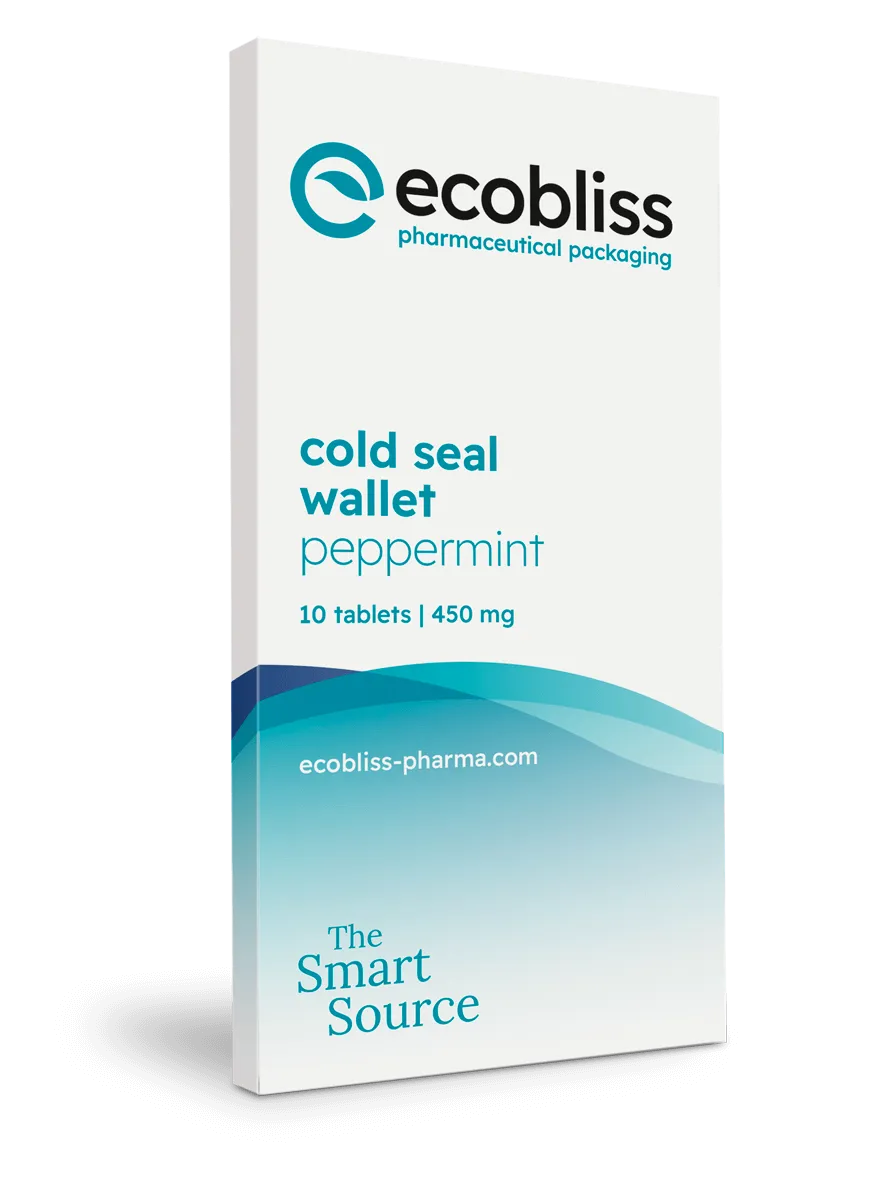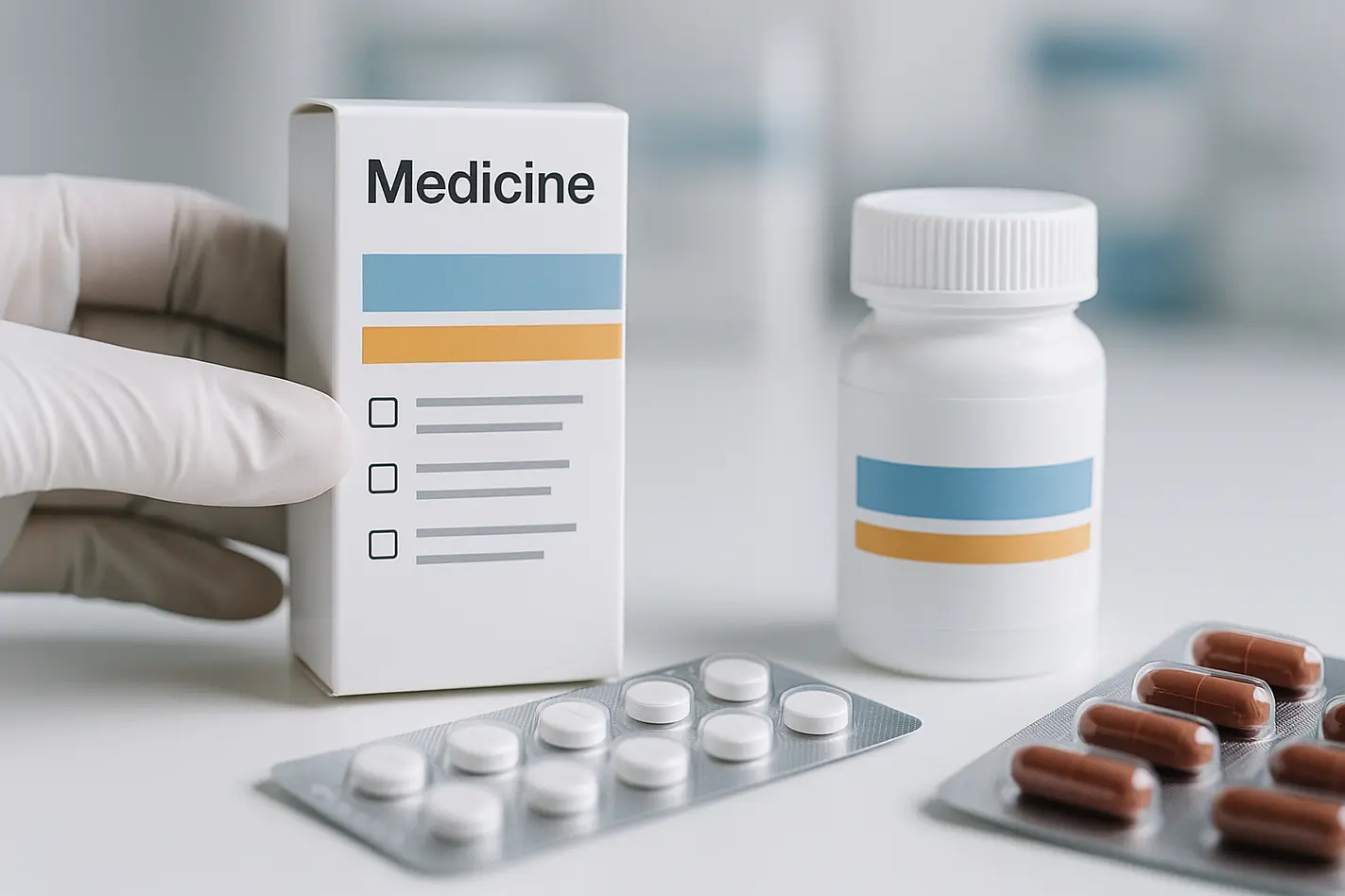Medicine packaging readability means how clearly patients can find, understand, and follow the instructions on a pack or leaflet. Clear design helps people use medicines safely. It lowers the chance of mistakes and meets legal rules in the EU and US. Readability supports better patient outcomes, safe handling, and easier use, especially for older adults, caregivers, or people with low vision or reading skills.
• Good readability improves patient safety, understanding, and confidence.
• EU rules require Braille, plain language, and user testing on certain packs.
• US labeling laws include the “Drug Facts” format, minimum font sizes, and contrast rules.
• Design layout, pack format, and material choice all influence how clear your message is.
Why medicine packaging readability matters
Clear medicine packaging helps patients avoid mistakes and follow instructions. It supports safe use by making dosing, storage, and warnings easy to find. Text that is too small or hard to read can be dangerous. Crowded labels, poor contrast, or folded areas that block information lead to confusion or missed doses.
Some patients have trouble reading due to age, sight problems, or reading level. Many rely on caregivers or speak another language. Simple layouts and easy language give everyone a better chance to take medicine safely and correctly.
EU and US rules that affect readability
Rules in Europe
In the EU, labels and patient leaflets must follow the QRD template. This is a structured layout that uses plain wording, a logical order, and must be tested with users. The goal is to help people find the most important messages first and understand how to take the medicine.
These extra features are also required on some packs:
• A 2D barcode for safety tracking
• A tamper-evident seal
• Braille showing the medicine name for people with vision loss
Each addition takes space, so we plan carefully. Our layouts avoid blocking other text while keeping everything clear and compliant.
Rules in the United States
In the US, over-the-counter medicines must use the “Drug Facts” layout. This shows information in a box with set font sizes, bold headings, and simple words. The FDA recommends clear color contrast, like black text on a white background, and space between sections to reduce confusion.
Structure, font size, and layout flow all help users find key instructions fast. These rules are especially important for patients who may read the pack once before use, without extra help.
Structure improves medicine packaging readability
A good layout helps people scan a label and understand it step by step. Large, clear fonts and open spacing reduce reading strain. The size and shape of lowercase letters, known as x-height, help with legibility. Space between lines, headings, and blocks makes scanning easier.
Warnings must be easy to see. Barcodes should not sit next to key text areas because they pull visual attention. We plan spacing and placement during early design. Our teams support clear label layout and code placement to keep each element in its proper place.
Packaging designs that support clear use
Some formats help users follow step-based or timed doses. Wallet cards and calendar blisters let patients follow a schedule, which is helpful for titration or multi-week therapies. These layouts improve medicine adherence and reduce missed doses.
Adapter cards and trays leave more room for clear instructions, larger fonts, or extra languages without clutter. We also use cold seal cards that support readable formats. These avoid heat in production, helping to protect surface quality and keep printed text sharp.
Designing for real-life use
Outside the design room, patients use medicine in many real-world settings. Low light, shaky hands, or being unwell can make a difference. Text must still be easy to locate and understand. Folded labels should not cover warnings or mix languages side by side without space.
To support clarity, good pack design includes:
• Icons and symbols that explain tasks fast
• Clear color-coded areas to split different languages
• Messages near flaps, seals, or break lines to guide use at the right moment
Simple words improve scanning. For example, “Take 1 tablet in the morning” is better than long, legal-style instructions. This keeps the message direct and useful.
Safe opening features without lost clarity
Child-resistant packs protect against accidental access but must still be user-friendly. Hard-to-open designs or poor labeling can lead to missed doses or cuts. Older users or people with limited hand strength need clear visual cues and steps placed near the opening area.
We design child-resistant packs with opening prompts that help users act correctly, while still meeting safety needs. This removes the need for trial and error when handling the medicine.
Sustainable materials that stay readable
Readable packaging can also be eco-friendly. For example, recycled boards and water-based adhesives still give good surfaces for high-contrast printing. They maintain strength and surface flatness, so labels stay legible during transport and storage.
We showed this in a case on improving patient experience without losing clarity. In that example, we combined sustainability with better usability by planning it into the structure from the beginning.
Check readability before launch
Before scaling up production, test the layout with your full team. That includes quality, artwork, engineering, and medical writing. Look for risks like small fonts, tight folds, bad contrast, or unclear placement.
You can request a Quickscan of your current pack. This helps you find problems early and avoid redesign costs later. It also ensures your packaging supports patients from the first batch onward.
FAQ
What is medicine packaging readability?
It is how easily patients and caregivers can read and follow the information on a medicine pack or leaflet. Good readability supports safety and correct use.
Why does packaging readability affect patient safety?
If patients cannot read or understand how to take their medicine, they may skip doses or take the wrong amount. Clear labels help avoid these mistakes.
What do EU rules say about medicine label design?
European packs must use the QRD format, plain language, and often include Braille, a 2D barcode, and tamper features. User testing is sometimes required.
How can I check if my packaging is readable?
Review font size, layout, fold lines, and contrast with your full team. You can also contact us to discuss any risks before production.
Can sustainable materials still support clear labeling?
Yes. Recycled boards and water-based glue can still take sharp prints. They allow high-contrast, durable labels without hurting readability.
Request a free sample now!









